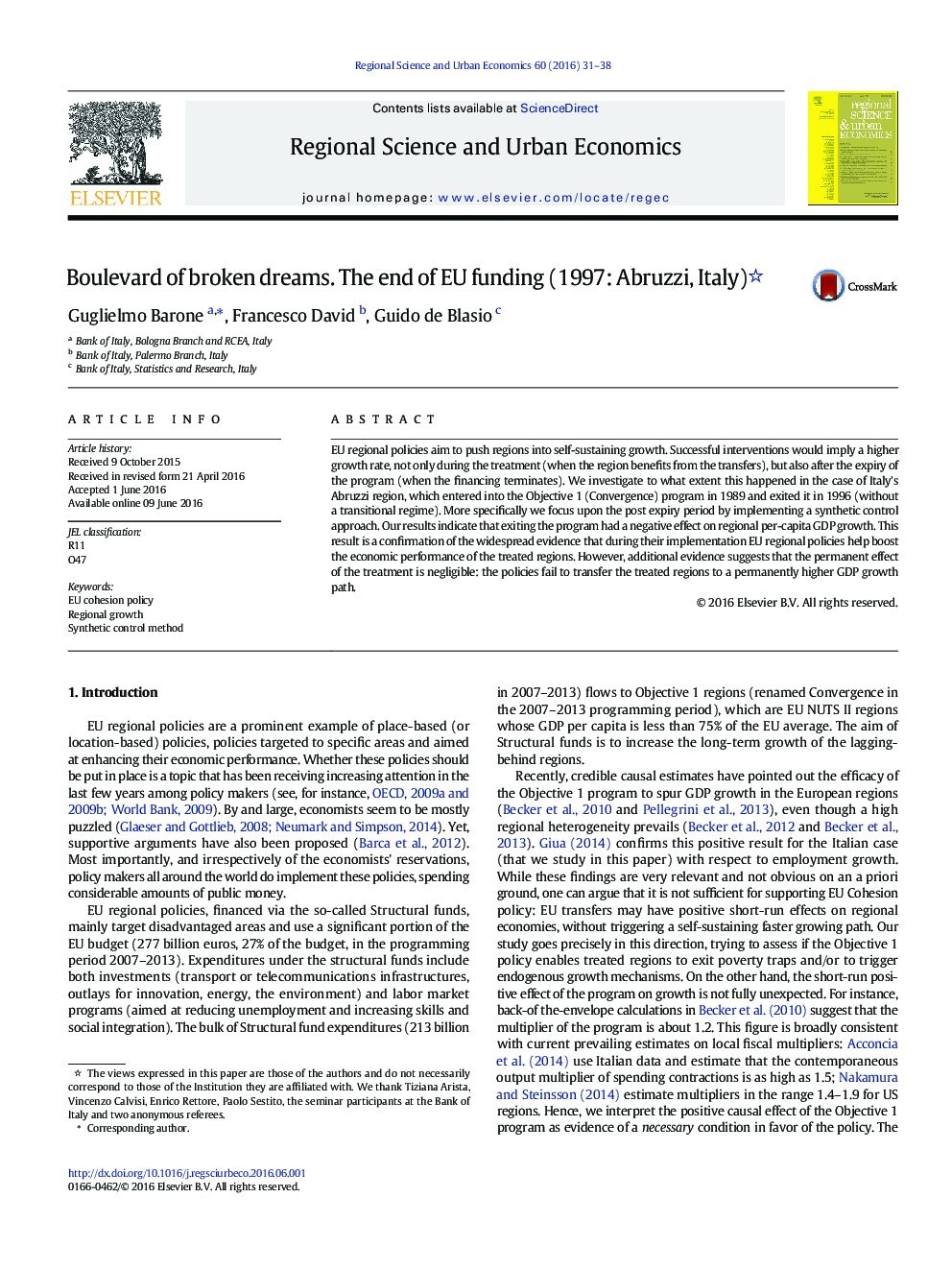| Article ID | Journal | Published Year | Pages | File Type |
|---|---|---|---|---|
| 983626 | Regional Science and Urban Economics | 2016 | 8 Pages |
•We investigate to what extent EU regional policies push regions into self-sustaining growth•We focus on the case of Italy's Abruzzi region, which entered into the Objective 1 program in 1989 and exited it in 1996•We examine the post expiry period by implementing a synthetic control approach•Our results indicate that exiting the program had a negative effect on regional per-capita GDP growth•Additional evidence suggests that the permanent effect of the treatment is negligible
EU regional policies aim to push regions into self-sustaining growth. Successful interventions would imply a higher growth rate, not only during the treatment (when the region benefits from the transfers), but also after the expiry of the program (when the financing terminates). We investigate to what extent this happened in the case of Italy's Abruzzi region, which entered into the Objective 1 (Convergence) program in 1989 and exited it in 1996 (without a transitional regime). More specifically we focus upon the post expiry period by implementing a synthetic control approach. Our results indicate that exiting the program had a negative effect on regional per-capita GDP growth. This result is a confirmation of the widespread evidence that during their implementation EU regional policies help boost the economic performance of the treated regions. However, additional evidence suggests that the permanent effect of the treatment is negligible: the policies fail to transfer the treated regions to a permanently higher GDP growth path.
